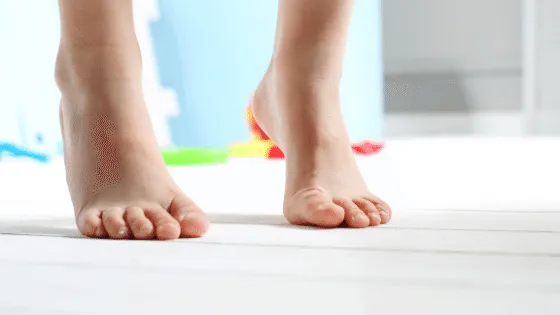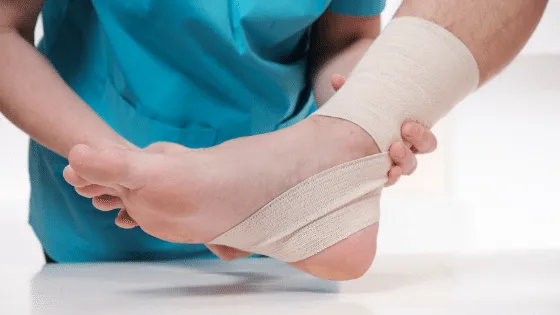It’s that time of year again where children all around Australia are getting ready to go back to school and for every parent that means buying new school supplies, uniforms, and school shoes. But how do you know what shoe is best for your child’s feet? Buying children’s shoes can be difficult as their feet are constantly developing and growing.
At The Foot Hub, we believe in school shoe stress no more! We’re here to help you understand what foot factors need to be considered, to help you invest in a new pair of children’s footwear that will ensure adequate comfort and support necessary for active and busy children. Here are 5 school shoe buying tips for children.
School Shoe Stress No More!
1. Take your child shoe shopping
Children’s feet are constantly developing so it’s important to have your child’s foot measured before buying shoes. Remember that every shoe fits differently so communicating with your child as to how the shoe fits is essential, and furthermore promotes healthy foot habits later in life.
2. Shop for shoes later in the day
Feet have the tendency to swell during the day so to ensure the most comfortable fit, buying the shoes in the evening allows for an adequate growing room.
3. Buy shoes that don’t need a “break-in” period
Shoes should be comfortable immediately. Having to “break-in” shoes can be uncomfortable and cause blisters and irritation. By buying shoes that don’t require a “break-in” period it ensures comfort the moment you leave the store.
4. Always buy for the larger foot
Feet very rarely are the exact same size. To ensure optimal comfort, always buy the shoe for the larger foot to allow for appropriate space.
5. Have your child try on shoes with socks or stockings
Depending on what your child will be wearing with their school shoes, trying the shoes on with socks or stockings will ensure the shoe fits properly when worn at school.
……………………………………………………………………………………………………………………………………………………………………………………………………………………………………………………………………………………………………………………..
Shoes that don’t fit properly can aggravate the feet. Shoes that are too loose or too tight are uncomfortable and can lead to numerous foot-related problems. Always measure a child’s feet before buying shoes to avoid discomfort.
Never hand down footwear. All feet are shaped differently, just because a shoe size fits one child comfortably doesn’t mean it will fit another the same way. Furthermore, sharing shoes can spread fungi such as athlete’s foot and nail fungus.
Watch for signs of irritation. Redness, blisters, and swelling, are sure signs that a shoe is too tight or too loose. If your child is limping, tripping, taking their shoes off frequently, or unevenly wearing out their footwear, this may be an unspoken sign that they are uncomfortable.
Examine the heels. In-toeing occurs when one or both feet point inwards due to a rotation in the foot, leg, thigh, or hip. When children begin to show in-toeing, they may wear away the heels of their shoes much quicker than outgrowing the shoes themselves. Uneven heel wear can indicate further foot problems so it is vital to examine the heels of the shoes.
 Sport-Specific Shoes
Sport-Specific Shoes
Almost every child spends their time at school running around the playground, playing sport, and being active. Understanding the appropriate sports shoes for children is essential to ensure optimal comfort, support, and fun! Sports-related injuries become more common as children increase their activities in sports, however, with appropriate footwear, injuries tend to be less common and less severe.
Certain qualities in sports shoes provide the certain support required for the activity. When buying sport-specific shoes, it is important to understand the physical requirements of the sport and the possible injuries that can result that would be significantly lessened by buying shoes with the appropriate attributes.
 Don’t Forget the Socks!
Don’t Forget the Socks!
Without the correct sock, even the best athletic shoe won’t score points on or off the field. If your child exhibits signs of hyperhidrosis (excessive sweating) or bromhidrosis (excessive foot odour), the selection of proper athletic socks may reduce these conditions.
The right athletic sock should:
- Be made of a natural/synthetic blend which helps wick away moisture.
- Not contain any large seams that can cause blisters or irritation.
By understanding the appropriate school shoes for your child’s growing feet, it works as an effective preventive measure in avoiding further foot problems to help ensure your child remains comfortable and focused at school. As Podiatrists, we strongly promote healthy foot habits, and so by encouraging at an early age the necessity of good foot care, we hope it continues to promote healthy foot habits later in life.
If you think your child is showing signs of a possible foot problem, book an appointment at The Foot Hub today.
Our children’s podiatrist in Sydney can help put your mind at ease about any foot problems your child may be experiencing and put together a tailored care plan for them.
Information summarised from: Children’s Foot Health, American Podiatric Medical Association (2017)













